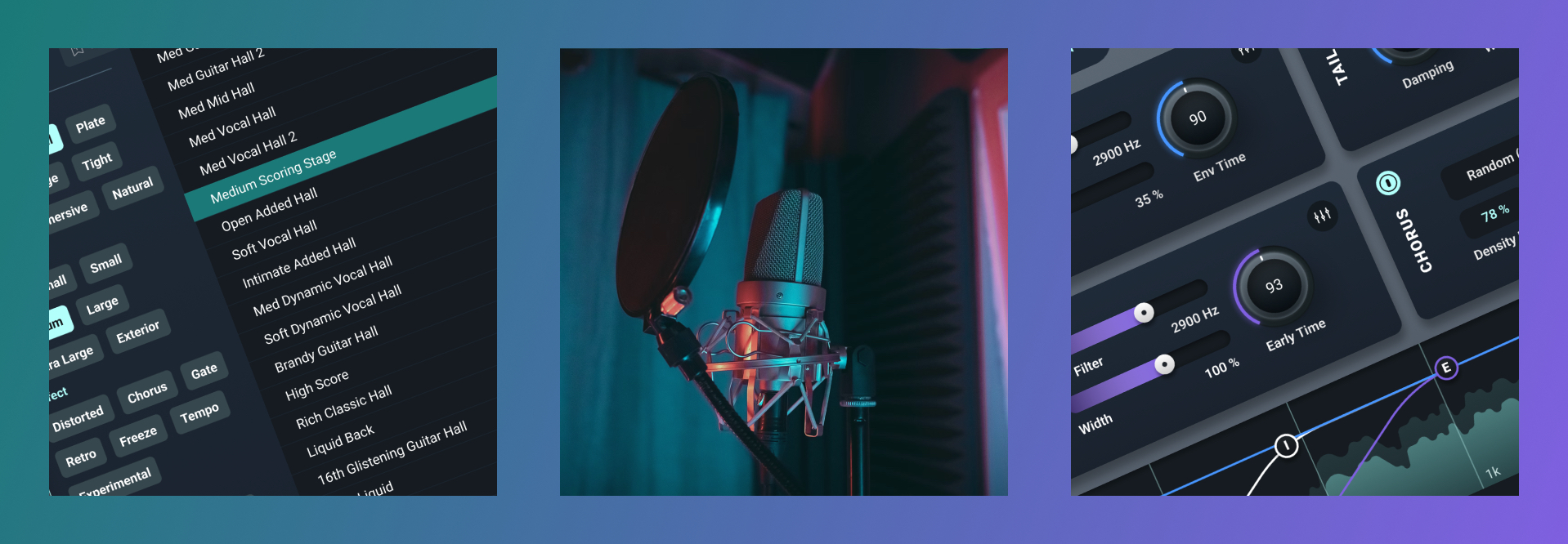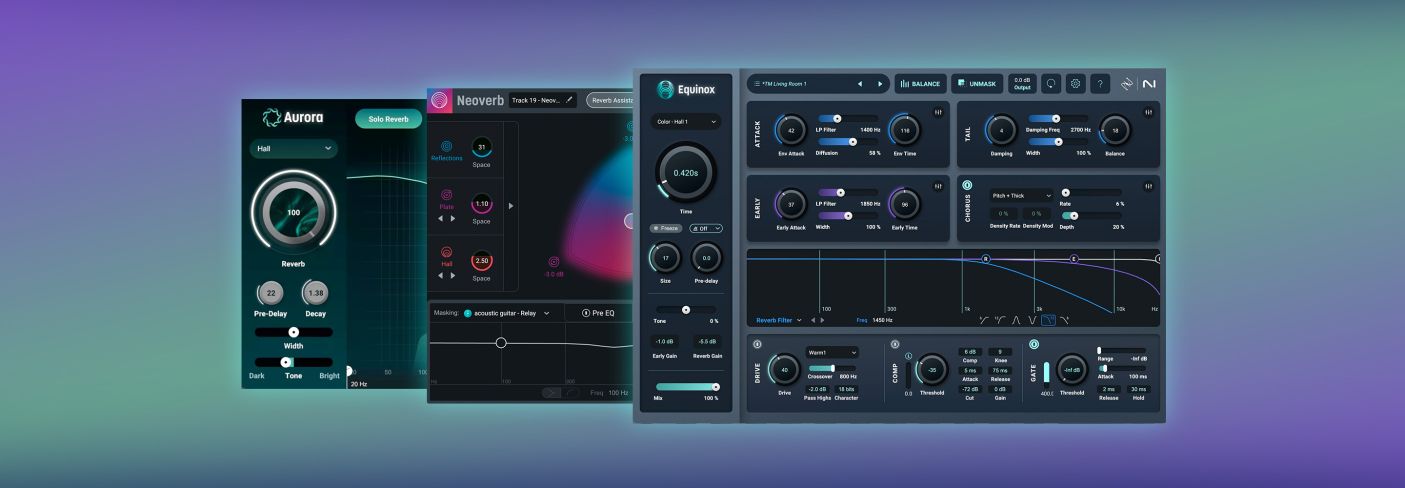
Find your space: a guide to iZotope Equinox, Neoverb, and Aurora reverbs
Uncover the key differences between Equinox, Neoverb, and Aurora to choose the perfect reverb for your music mix, post-production, or immersive audio workflow.
Neoverb, Aurora, and Equinox are iZotope's algorithmic reverbs, taking the celebrated sound of early digital reverbs and skillfully bringing them into the modern era. They also do so in highly individuated ways: each plugin approaches the concept of space differently.
From creative blendability to adaptive clarity to high-end post-production precision, understanding the distinctions between these plugins helps you choose the right tool for your sonic vision. Let’s break down what sets each one apart and how they can fit into your workflow.
And for a limited time, get all of these reverbs on sale.
What is the difference between Neoverb, Aurora, and Equinox?
- Neoverb is a creative, multi-textural reverb built around a blend pad for combining three different spaces, and it features an assistant with inter-plugin unmasking EQs.
- Aurora offers a more stripped-down selection of great-sounding algorithms and introduces dynamic spectral unmasking, which intelligently ducks the reverb's frequencies in real-time.
- Equinox is the high-end choice, combining the rich sound of Symphony and the realism of Stratus, featuring adaptive unmasking, and providing extensive support for immersive formats like Dolby Atmos.
All three are algorithmic reverbs, meaning they rely on maths to generate their sound rather than interstitched samples of real world spaces. All three have some genesis in Exponential Audio, which of course has its own genesis in the legendary Lexicon reverbs of the early digital age.
Let's dive into some of their differences in greater detail.
Neoverb


Neoverb
This assistant also has unmasking EQs built in that allow you to target a variety of sources via interplugin communication.
Want the vocal reverb to stay out of the way of your snare? Neoverb can analyze the tonal contours of that snare drum and stay out of its way.
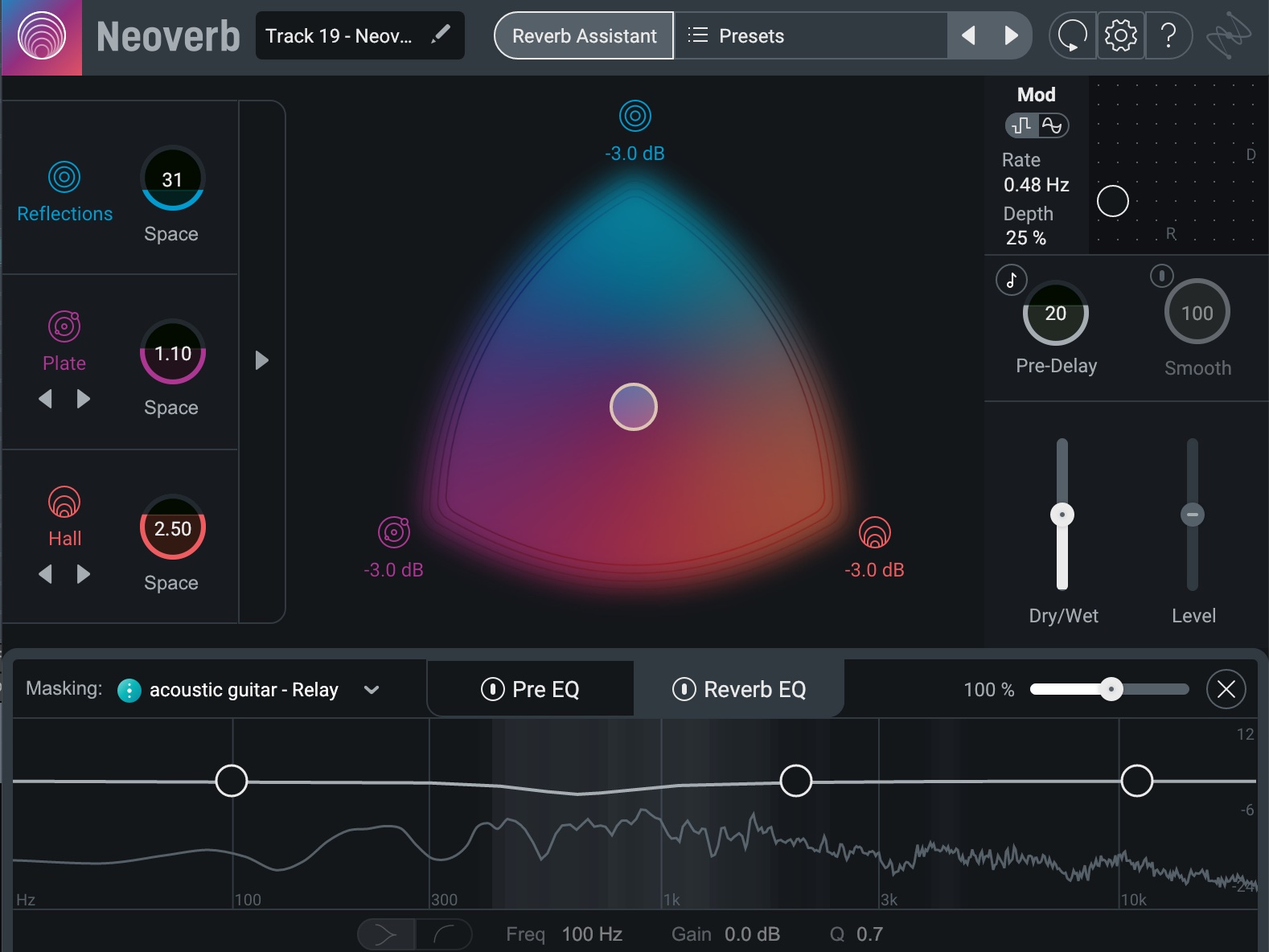
Neoverb unmasking after running the Reverb Assistant
Aurora


Aurora
Aurora also introduced spectral unmasking into iZotope’s reverb plugins.
Aurora analyzes the input signal and applies automatic ducking to the resulting reverb. Unlike the assistive tech in Neoverb, it knows which frequencies need to be dialed down instantly, and it works dynamically: you’re not applying a static cut to a reverb return, or a dynamic EQ to a prescribed frequency band.
If the resonance build-up moves from 300 Hz to 430 Hz as the song transitions from verse to chorus, Aurora will track the change instantly and apply an appropriate amount of spectral ducking.
Equinox


Equinox
Symphony, by contrast, leaned colorful: modulation, richness, a bit of that Lexicon-inspired lushness. Equinox puts both personalities under one roof, so you can decide whether the moment calls for realism, color, or some combination of the two.
But Equinox doesn’t stop there. It carries forward preset libraries from Stratus and Symphony, meaning It also layers in the adaptive unmasking technology introduced in Aurora, letting the reverb intelligently tuck itself around dialogue, vocals, or percussion without you reaching for EQ or dynamic processors. It also works in immersive formats (more on this later).
Where Neoverb aims at creative efficiency and Aurora at intuitive clarity, Equinox is the high-end choice – the plugin that gives you every space, every channel, and the precision to disappear into the work.
When to use each reverb
Neoverb
Use Neoverb when you want to create complex, multi-layered reverb soundscapes with maximum creative efficiency and minimal CPU load, using its three-way blend pad and assistive unmasking technology.
Here's what I mean. Sometimes in a mix, you want a little plate, a little hall, and a little ambience – all at the same time. Some mixers would use this approach in the analog days to get an upfront / midfield / deep background soundscape. Sometimes, they’d ride the volume of the reverb returns on the board, going for more plate and hall in the choruses, and favoring the short ambiences in the verse.
If you’re going for this kind of approach, Neoverb is your best bet. It’s built around a three-way blend pad, so you can get multiple reverb sounds in one plugin.
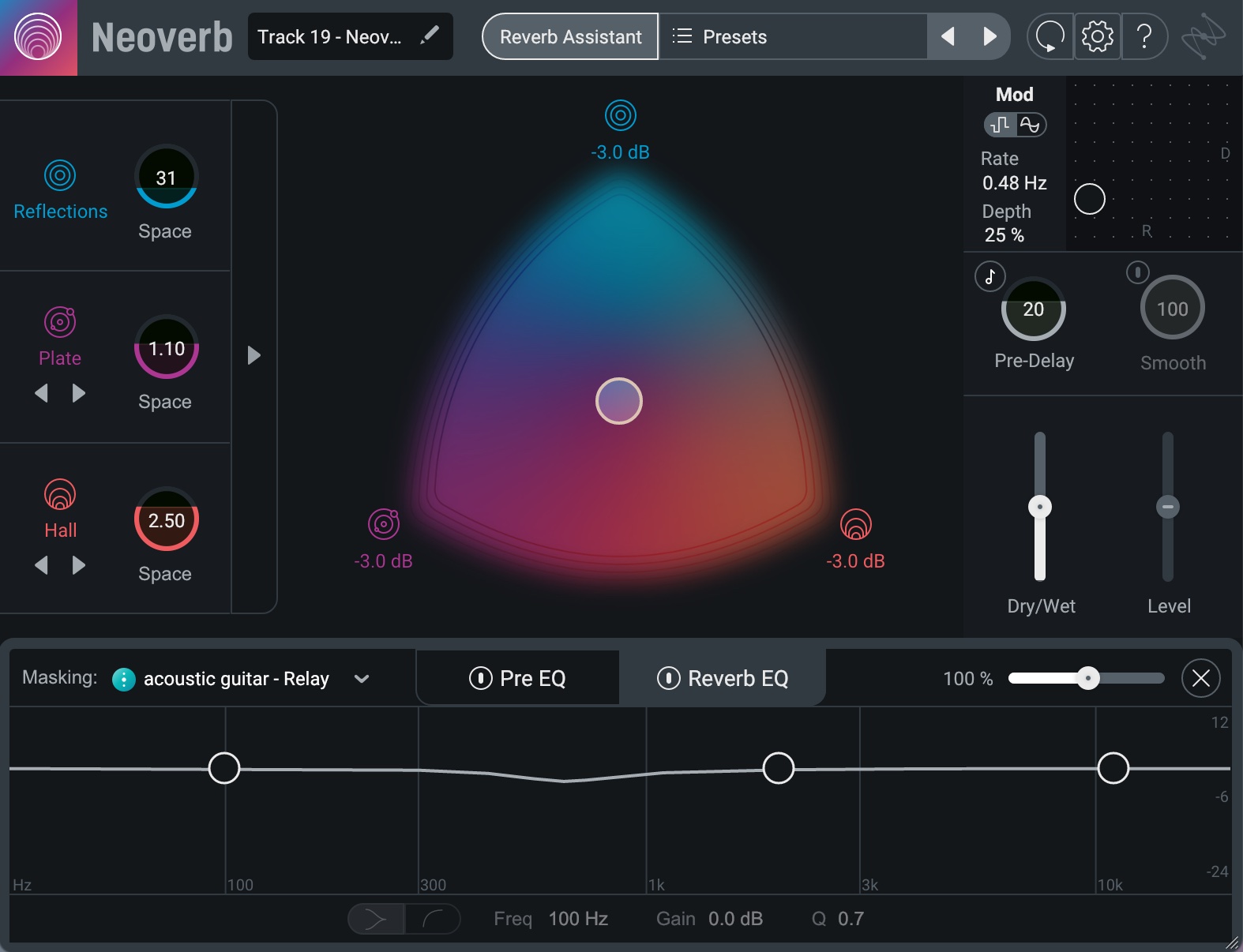
Neoverb blend pad
Your shorter ambiences are at the top of this triangular shape. The left holds your plates, rooms, and chambers; the right has your halls. Short at the top, medium on the left, long on the right.
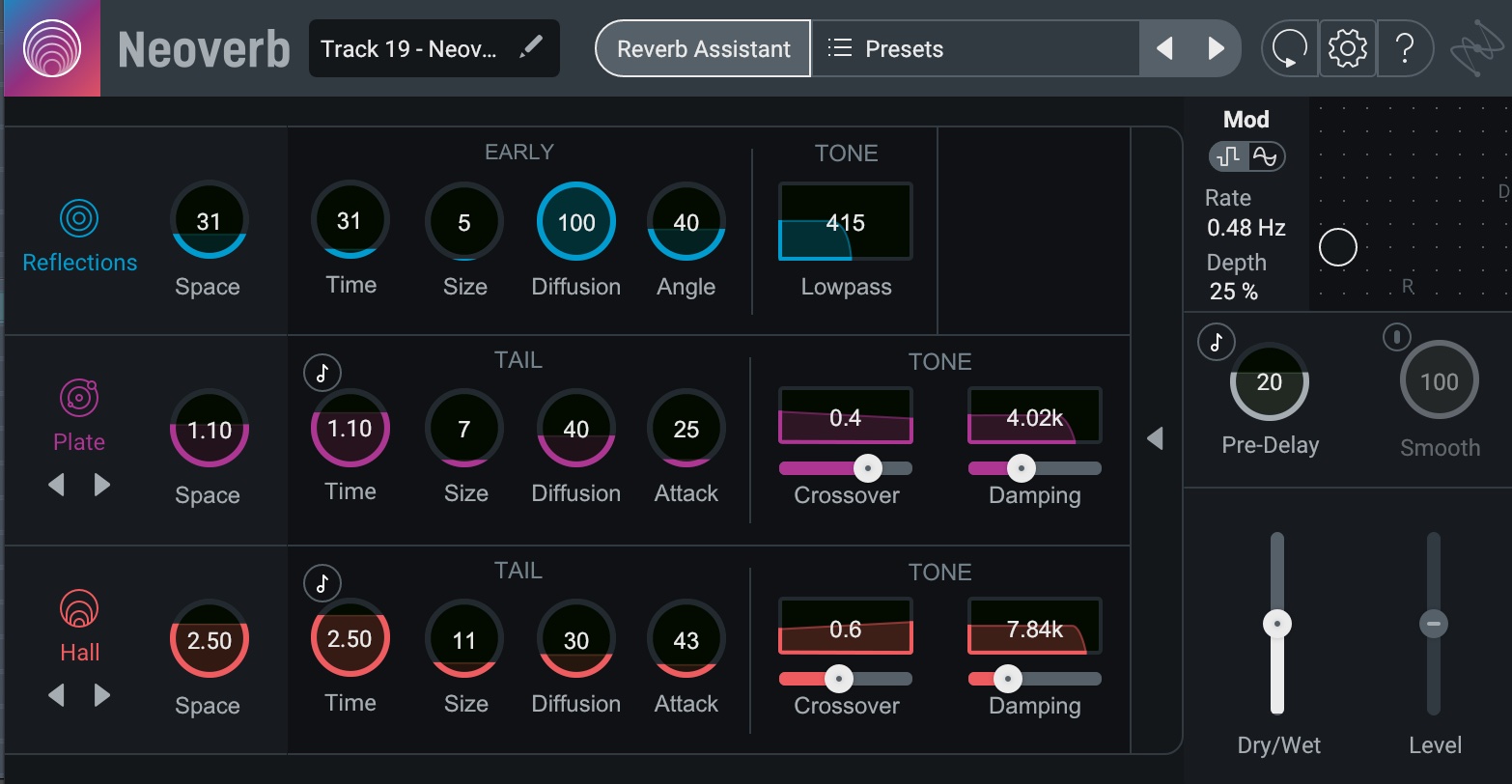
Neoverb, different settings
Each of these can be set differently, as you can see. As previously mentioned, Neoverb also has interplugin unmasking built in, as well as assistive technology.
If you are limited in CPU handling, track count, or a self-imposed restriction, Neoverb is the one to choose. You can mimic that short/medium/long approach with just one plugin. You can automate the levels of these instruments for different parts of the song and automate different parts of the reverb to take over when you need it. Observe:
In the chorus, we’re bringing down the guitars’ send level, while pushing the blend pad toward the plate and large chamber. This gets us a more expansive chorus. Moves like this are where Neoverb shines.
Aurora
Use Aurora when you want the sonic 'vibe' of a long or dense reverb without sacrificing mix clarity, utilizing its dynamic spectral unmasking to keep the effect clean and out of the way of the source.
I personally use Aurora when I want the vibe of an effect rather than the sound of it. Say I want a stadium reverb on a guitar, but I don’t want it to wash over the mix. My go to reverb, in this case, would be a hall from Aurora with a good deal of unmasking.
See, Aurora will analyse the guitar in real time and only apply spectral ducking when it needs to.
Observe these guitars with Aurora applied – though no unmasking yet.
Sounds good, but in the overall mix, we’re going to get a lot of washiness.
The reverb has made everything sound blurrier, less distinct, and less professional.
With Aurora, I don’t have to abandon the reverb entirely to make it work. All I have to do is enable the masking features in Aurora with one button click, like so:
This makes Aurora great for achieving the vibe a reverb needs to bring without overt sonic signatures you might want to avoid.
Equinox
Use Equinox when you need the precision, realism, and robust channel handling for high-end post-production, immersive audio formats like Dolby Atmos, or when relying on deep preset libraries for speed and accuracy.
Equinox comes particularly handy when post-production and sound design meets the rarefied air of Dolby Atmos mixing rooms. In Pro Tools, it opens into full Atmos territory, handling multichannel formats. That makes it a serious tool for post-production workflows in high-end studios: instead of kludging together multiple stereo reverbs to fake surround, you can run one coherent algorithm across the entire bed or object array. At the same time, it still thrives in a music mix, whether you’re after immersive realism or a modulated, symphonic bloom.
Equinox also distinguishes itself in the way it handles control versus curation. It comes stocked with a ton of presets, which at first glance sounds like the usual marketing bullet point. But the truth is, when you’re knee-deep in a movie, presets aren’t about laziness – they’re about speed. You often need to dial in a sound that feels like a “small living room” or a “distant cathedral” in seconds, because the picture is rolling and the schedule doesn’t care.
Equinox’s presets cover those bases with enough specificity that you’re not endlessly scrolling, but also with enough breadth that you can drop in, tweak a parameter or two, and move on.
Observe a badly recorded vocal, done on a laptop mic of all things.
Let’s process the vocal a little bit, getting rid of the horrid laptop quality using iZotope de-noising plugins and some color from the Lindell 825 EQ.
Let’s give it some foley and sound design.
Now, let’s pan me around the room a little.
Finally, let’s try out some different Equinox reverbs. Here's the basement bedroom.
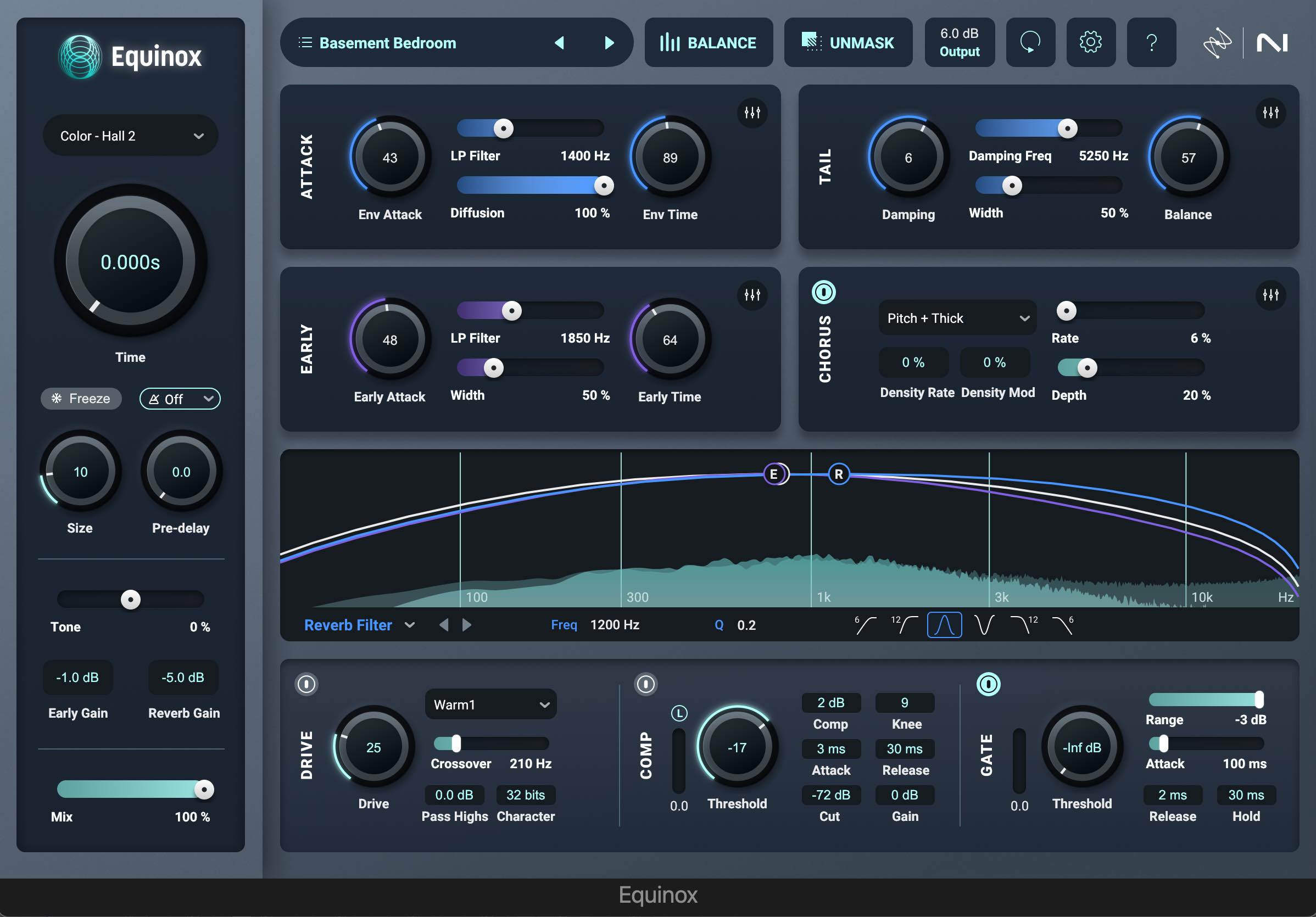
Equinox basement bedroom reverb
Here's the TM Living Room 2 preset.
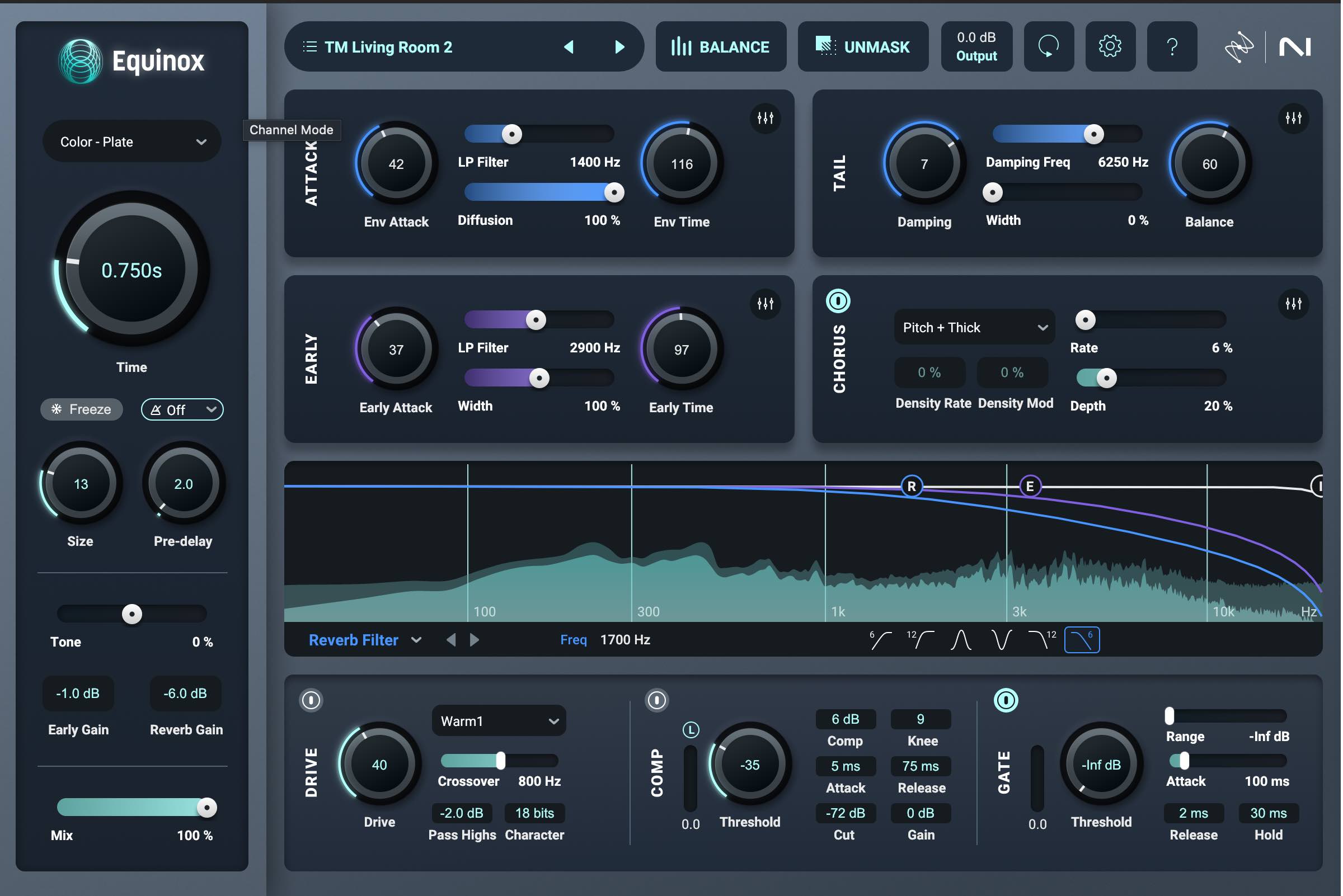
Equinox TM Living Room 2 preset
And here's the Rural Kitchen preset.
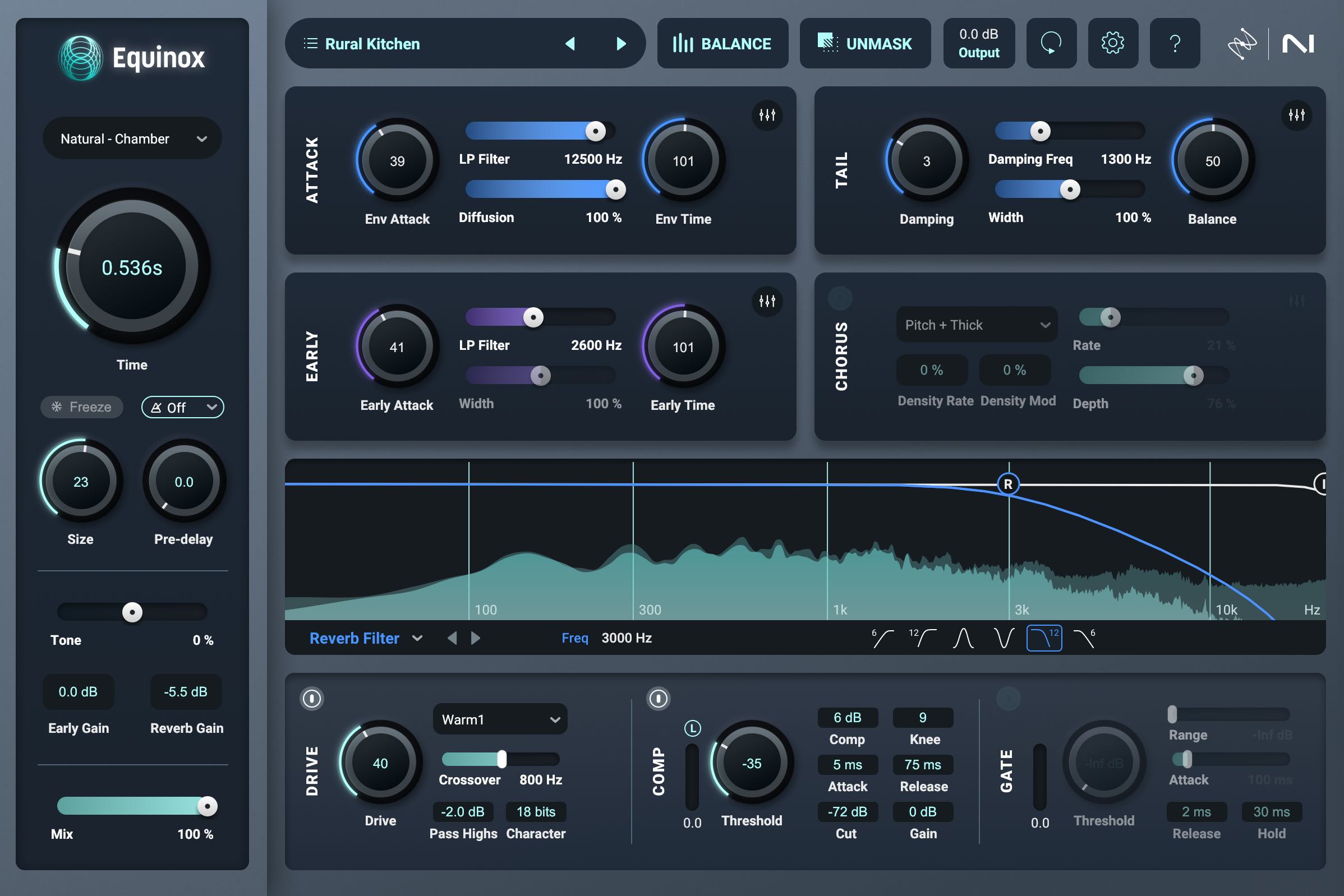
Equinox Rural Kitchen preset
In each of these examples, the levels are the same. The panning is the same. The same crows caw from out the window. The room tone hasn't changed either. Yet each one feels quite different – and all we did was insert presets.
Tweaking is definitely possible for those who want it; Equinox offers a ton of controls over tone, response, modulation, and drive. But for getting a great post sound going, the presets are a time saver.
A space to experiment
We've gone in-depth for each reverb available. For maximum creative flexibility and a lighter CPU load, Neoverb is the ideal choice. If your priority is achieving a specific 'vibe' without the reverb washing out your mix, choose Aurora for its straightforward algorithms and powerful dynamic spectral unmasking. Finally, if you require the highest-tier precision, realism, extensive control, and support for immersive formats, Equinox is the necessary tool.
In the end, choosing between Neoverb, Aurora, and Equinox comes down to your goals and workflow. All of them will do the trick for your musical needs – though if immersive deliverables and post-production mixing is your bag, pay special attention to Equinox.
